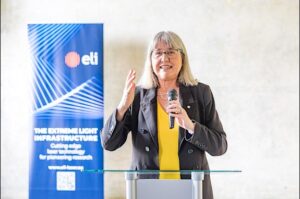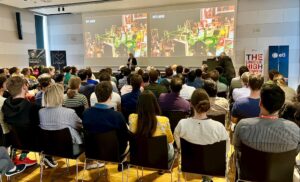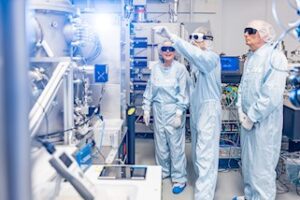Nobel Laureate Donna Strickland Visits ELI for the First Time
Nobel Prize in Physics winner Donna Strickland, made her first visit to the Extreme Light Infrastructure (ELI) in Dolní Břežany (near Prague), highlighting the critical role her pioneering work in laser physics plays in supporting ELI’s advanced research.
Donna Strickland, a professor at the University of Waterloo in Canada, is celebrated for her groundbreaking development of Chirped Pulse Amplification (CPA) in 1985. This work, completed during her PhD at the University of Rochester alongside Gérard Mourou, earned her the Nobel Prize in Physics in 2018. The CPA technique has revolutionised the generation of ultrafast, high-intensity laser pulses, which are crucial for applications ranging from corrective eye surgery to fundamental scientific research.
Donna Strickland
Mourou, who initially led the development of the Extreme Light Infrastructure (ELI) in the early 2000s, helped establish facilities that specialise in generating these ultrashort and ultra-intense laser pulses. ELI is now a world leader in exploring fundamental physics phenomena and driving technological innovations across various disciplines, including high-energy physics, materials science, and biomedical applications.
During her visit to the ELI Beamlines Facility on May 8-9, Strickland delivered a lecture detailing her collaborative work with Mourou that led to the invention of CPA.
“I got the idea to produce coherent radiation in the extreme ultraviolet, which I thought would be a good PhD project, but I needed a more intense laser than we had at the time,” Strickland explained to the ELI staff. “Gérard suggested stretching the pulse by chirping it—or changing the frequency through the pulse—so it wouldn’t damage the laser.“
This innovative approach took about a year to perfect and resulted in her first published paper, a concise three-page document. “We wanted to publish the paper fast because we thought others were trying to do the same thing,” said Strickland. “As it turns out, nobody else really saw it, and I finished my PhD on a different topic.”
Strickland continues to lead the ultrafast laser group at Waterloo, focusing on developing high-intensity laser systems for nonlinear optics investigations. She is the third woman to receive a Nobel Prize in Physics, following pioneers Marie Curie and Maria Goeppert Mayer.
“It’s not an exaggeration to say Donna’s work made ELI possible,” says ELI Director General Allen Weeks emphasised the significance of Strickland’s contributions “CPA technology, which Strickland helped develop, is a key driver of ELI’s laser systems.”
In addition to her lecture, Strickland was able to tour the ELI labs and see some of the most advanced versions of the lasers she helped to create. She also listened to the selected work of some of ELI’s most promising young researchers. She plans to encourage Canadian researchers to visit and use the facilities.
Source: https://eli-laser.eu/news/nobel-laureate-donna-strickland-visits-eli-for-the-first-time/


